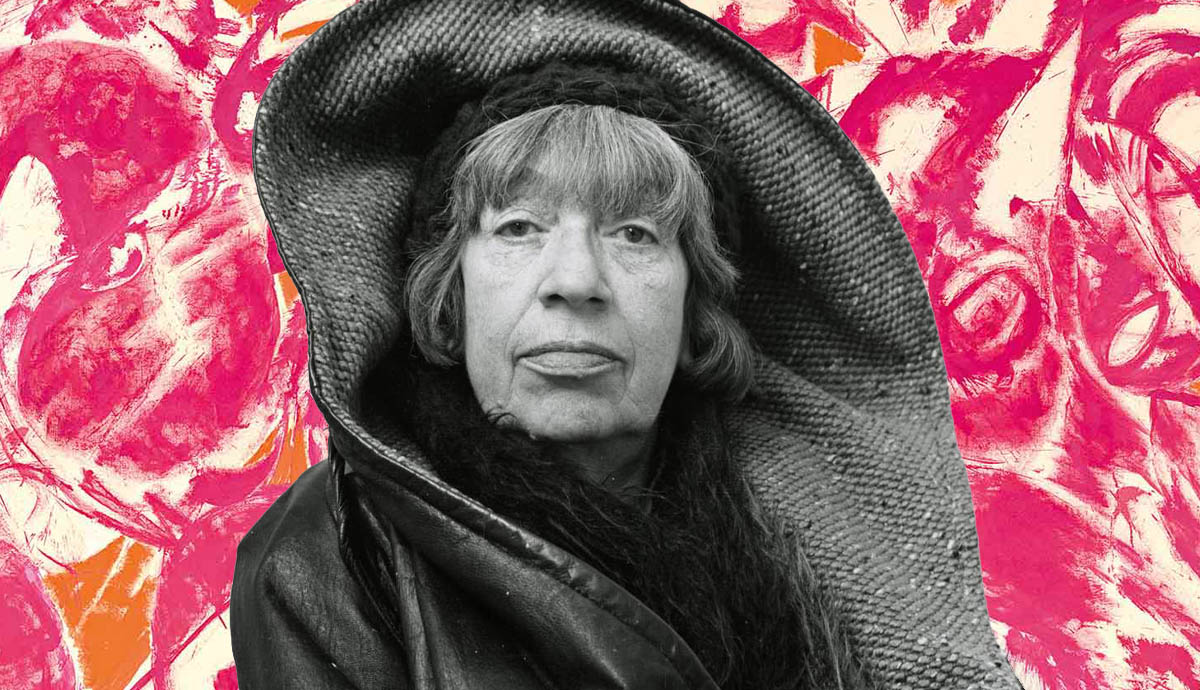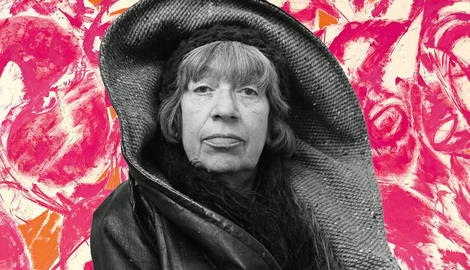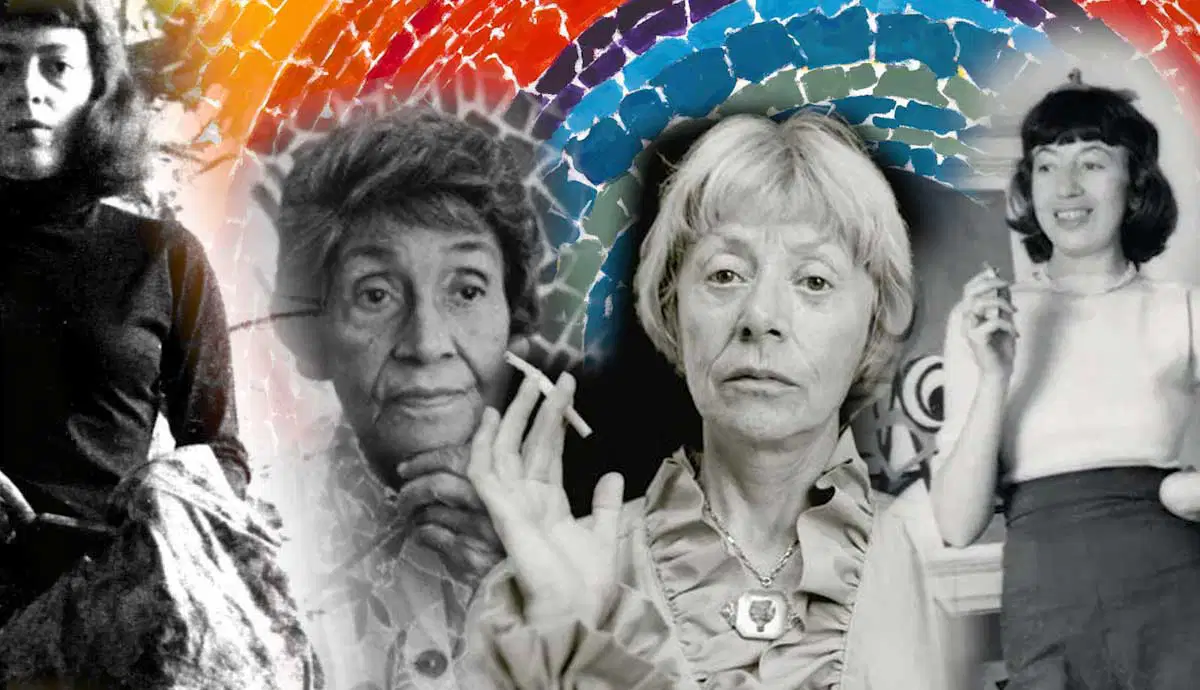
Lee Krasner was a pioneering Abstract Expressionist, who shook up the 1950s New York art scene with a bold, fresh and experimental approach to making art. She led the ‘all-over’ technique, covering her canvases with flowing, rhythmic patterns of form and colour that burst with life, sometimes violently slashing apart her old work and restyling it in a new way. Married to Jackson Pollock, her work was often overshadowed by her husband’s, but in the 1970s, feminist art historians brought her art into the international sphere and since then, her star has been on the ascent.
Early Years in Brooklyn
Born in Brooklyn in New York in 1908, Lee Krasner was one of seven children. Her parents were Russian-Jewish immigrants who spoke Yiddish and had fled from a shtetl outside Odessa for a new life in the United States. Settling in a Jewish neighbourhood of Brooklyn, Krasner’s parents owned a grocery store and fishmongers, but they often struggled with seven children to raise.
Tenacious and determined, Krasner settled on an art career early on. When she was just 13, she found the only New York school that taught advanced art classes to girls, the Washington Irving all girls High School, and applied several times before earning a place.

A Standout Student
After leaving High School Krasner moved on to study fine art at the Cooper Union in New York. Continuing to remain in New York, she furthered her studies at the Art Students League and the National Academy of Design, a standout student wherever she went.
Early artworks were figurative, exploring expressive portraiture mixed with elements of Surrealism. During the great depression, Krasner found work in New York painting huge public art murals for the Works Project Administration (WPA) and was soon promoted to a supervisory position.
Deconstructing the Image

Throughout the 1930s Krasner mingled with the bohemian, mostly male crowd of artists in downtown Manhattan, meeting various artists who would become pioneers in Abstract Expressionism, including Barnett Newman and Mark Rothko. Krasner also began attending art classes with the progressive teacher Hans Hofmann, who introduced her to the fragmentation of Cubism and the flattened designs of Henri Matisse.
Krasner began experimenting with deconstructed imagery that filled the entire surface in an “all-over” design, which would become a defining feature of her art. Her ideas greatly impressed her mentor, so much so he patronisingly called her work, “so good you would not know it was done by a woman.” Piet Mondrian also saw her work at this time, praising her “very strong inner rhythm.”

American Abstract Artists
Krasner was a founding member of New York’s radical American Abstract Artists Group, established in 1936. Through this group Krasner met Jackson Pollock and they soon fell in love. In 1942 they moved in together in New York, and three years later bought a barn house in Springs, Long Island.
While living here Krasner began her breakthrough Little Images series, made between 1946 and 1950, in which all-over patterns are composed from patches of fractured colour. References to her Jewish past were included, with patterns, motifs and symbols lifted from Jewish Mysticism and Kabalah. Even so, she often struggled to be taken seriously as a woman artist in an art scene surrounded by men.

Turmoil and Destruction
By the mid-1950s Krasner and Pollock’s marriage was crumbling after Pollock’s fame led him into a reckless streak of alcoholism and womanising. Krasner’s frustration played out in her art as she tore apart her work in rage, reassembling them as disjointed, fragmentary designs.
The works that came out of this period were positively praised by the New York art scene, particularly renowned critic Clement Greenberg, who called her 1955 solo exhibition one of the most important shows of the decade. In 1956, while Krasner was travelling around Europe, Pollock died in a car crash.
Blinded by grief, Krasner took up residence in Pollock’s barn studio, using art as an anguished outlet for her pain. The scale of her work increased dramatically and she often worked at night, famously blasting out her Umber Paintings. She also worked on the large series Earth Green, 1956-9, which shared Pollock’s muted colour palette and abstracted motifs, in homage to his memory.

Later Years
In the 1960s and 70s Krasner’s work became increasingly popular during the rise of the Women’s Movement, when feminist art historians introduced Krasner’s vital Abstract Expressionist work into a wider, international audience.
On the back of this success, Krasner was offered a huge retrospective at the Houston Museum of Fine Arts in Texas in 1983, which travelled around the United States, culminating at New York’s Museum of Modern Art. Krasner continued to make work up to her death in 1984, living between Springs and New York, interweaving expressive elements of drawing, collage and painting together in ever more experimental ways.

Auction Prices
Recognised today as a key figure in Post-war American Abstraction, Krasner’s art continues to reach staggeringly high prices at auction. Here are some examples of her most valuable artworks:





Did you Know?
Krasner’s birth name was Lena Krassner, which she first changed to Lenore, before settled on the more androgynous Lee, and removing the second ‘s’ from her surname.
While a student Krasner struggled financially and took on part-time work in a factory and as a waitress to support herself.
During the Second World War, Krasner held a directorial role with the Workers Project Administration (WPA), which promoted public art across New York, supervising the production of 19 shop window displays.
Because of her mixed cultural heritage, during the Cold War the FBI opened a file on Krasner, suspecting she might be a spy.
Krasner established the Pollock-Krasner Foundation, an organisation aimed at supporting a new generation of artists.
The barn house Krasner shared with Jackson Pollock in Springs, East Hampton, has been preserved as a public museum today, called the Pollock-Krasner House, still housing many of the two artists’ personal mementoes and works of art.
Krasner often signed her work LK, in an attempt to avoid having “feminine” assumptions made about her practice.
Krasner was played by the actress Marcia Gay Harden in a biopic film telling the story of Jackson Pollock, titled Pollock, 2000.
Krasner was one of just a few women in the 1960s to hold a retrospective at New York’s Museum of Modern Art.
Some of Krasner’s paintings were so large, she had to jump from the floor with a long-handled brush to reach the farthest corners.










